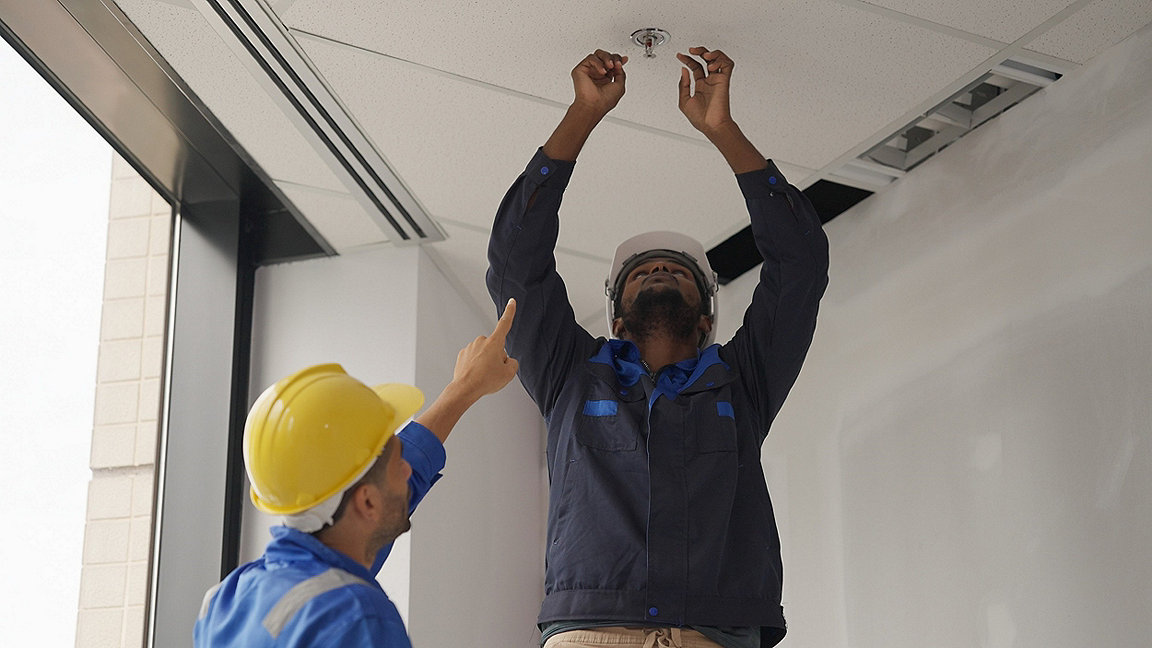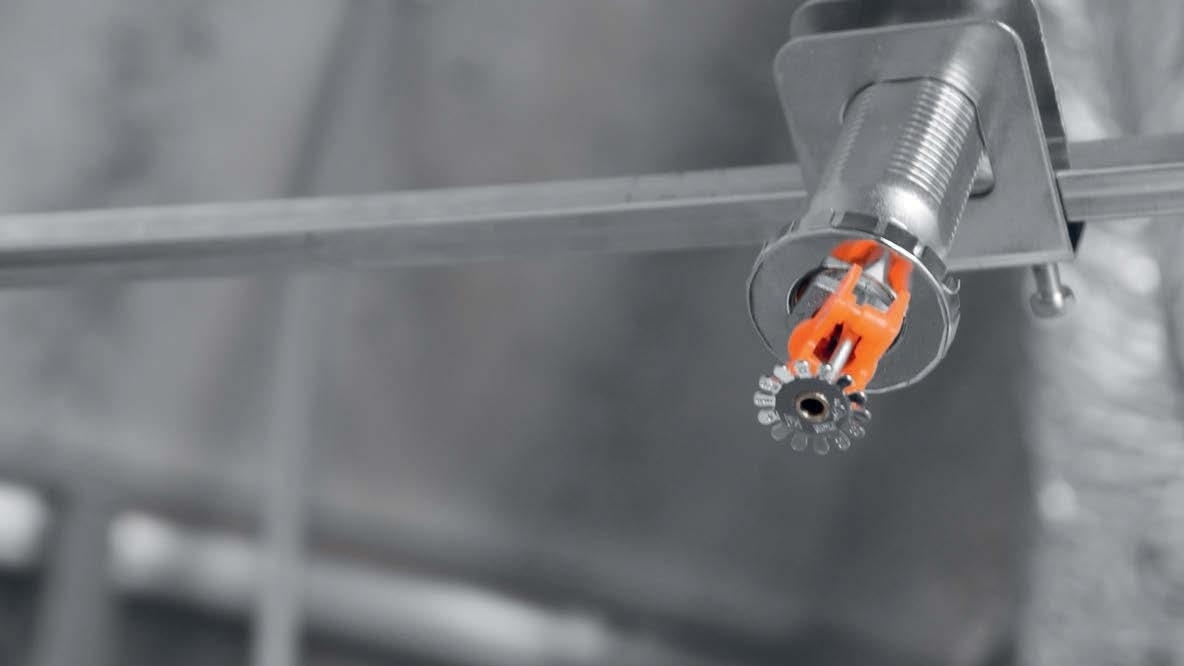
When fire breaks out at educational institutions, there are distressing consequences – both in terms of disruption to students and financial implications.
Such fires are also a poignant reminder of the urgent need to prioritise safety measures, particularly considering the insufficient adoption of sprinkler systems in new school constructions.
Number of school fires increasing
Sprinklers are mandatory in newly constructed school buildings in Scotland and are a condition of government grant funding in Wales, but despite the rising number of school fires since the lockdowns of 2020–21 there is no such requirement in place in England or Northern Ireland.
However, the number of fire incidents in proportion to the number of school buildings in England is similar to the rate in Scotland and Wales.
The implication is that, given there seems to be no difference in the occurrence of fires in schools, Scotland and Wales have chosen to protect school buildings as part of their critical infrastructure, while England is seeking to downgrade that protection.
When you consider the huge costs associated with school fires – such as rebuilding, temporary relocation, loss of equipment and pupils' work, as well as the emotional and physical upheaval – we are still not learning the lesson about fire and its impact when schools are built without sprinkler systems.
A freedom of information request by insurer Zurich in February 2021 found just 8.5% of new schools built in England since 2015 were sprinkler-protected, yet the number of fire incidents in primary and secondary schools rose from 250 in 2020/21 to 341 in 2021/22.
Classes disrupted by damage remediation
As recently as August, there have been two significant school fires in England: one in Hartlepool and another in Bolton.
The blaze in Hartlepool on 12 August resulted in 10% fire damage and complete smoke damage to the nursery, according to the local fire brigade. The rest of the school experienced less severe smoke damage.
The fire-damaged portion will need to be rebuilt, while the rest of the nursery complex will be replastered and painted and the remainder deep cleaned and redecorated.
The 17 August fire at Saints Simon and Jude CE Primary School in Bolton caused even more damage, with the main teaching spaces, central hall and kitchens destroyed.
The school has more than 600 pupils, and their return after the summer holiday necessitated temporary arrangements at four different locations, which, judging by similar school fires, will be required for around two years.
Smaller blaze still has significant impact
An event that did not attract as much attention was a fire that broke out at the unsprinklered Ash Green Primary School – again in England – in Mixenden, West Yorkshire, on 1 February 2022. This destroyed a quarter of the key stage 2 block, and affected the entire school population.
The severe fire required ten crews and one aerial ladder platform from the county's fire and rescue service. Despite their efforts, there was such extensive damage to the single-storey upper school building that it had to close, and pupils were displaced to temporary classrooms or further alternative spaces.
The estimated cost of the upper school rebuild is £4.5m and it is expected to be completed in 2025 – representing three years of disruption to the education of 500 pupils.
It is worth stressing that the fire at Ash Green did not involve the destruction of the whole school. Although bigger blazes garner the headlines, fires that cause damage to two or three education spaces or classrooms can also have a significant impact.
Put simply, a school runs out of space to relocate students in such cases, which hampers the work of an entire school or department and thus the delivery of education.
Scale of displacement and costs adds up
Across these three events, more than 1,100 pupils were displaced and have experienced significant disruption to their lessons.
This disruption has meant parents having to adjust childcare and trying to continue their children's lessons at home. The impact continued until the schools found temporary accommodation, but that was not always in the same place as their original premises.
The UK government is insistent that even a week's interruption to education would have a negative impact on a child's attainment. Its stance on this matter is so resolute that it imposes a daily fine of £60 on parents for taking their children out of school.
Fires such as those described have an even greater impact, so that by the government's own calculation a two-week shutdown following a major fire at a school with a thousand pupils will have damaged their education equivalent to fines of £600,000.
On a broader scale, a study conducted in 2020 by insurer Zurich revealed that firefighters have been called to nearly 2,000 school blazes in England in the past three years.
The study estimates that as many as 390,000 teaching hours could be lost within any year due to significant fires, affecting 28,000 students.
The financial ramifications are equally dire, with the average repair bill for substantial fire incidents being around £2.9m. Certain catastrophic fires meanwhile could cost up to £20m.
'More than 1,100 pupils have been displaced, experiencing significant disruption to their lessons'
Proposed bulletin revisions would reduce protection
The government first consulted on a revised version of Building Bulletin 100 (BB100): design for fire safety in schools in 2016, with a view to requiring sprinklers only in schools more than 11m in height, special schools and sleeping accommodation within boarding schools.
It has been 29 months since the most recent consultation on this topic, which closed in August 2021, although it is unclear why there have been multiple consultations without a revised BB100 being produced.
This 2021 consultation had no impact assessment supporting the assertions that sprinklers would only be necessary in special educational needs and disabilities schools, sleeping accommodation in boarding schools or schools of more than 11m in height, or no indication of the impact that fires have on the education of pupils.
The Business Sprinkler Alliance (BSA) has always emphasised that the current edition of BB100 sets the right expectations for the protection of schools and the importance of the continuity of education.
The Department for Education (DfE) is, in our view, seeking to downgrade the requirements for continuity and sprinklers in schools in England, whereas Scotland and Wales are seeking to increase the number of schools that are sprinkler-protected.
As there is no evidence that the prevalence of fires in schools is significantly different in the different nations, and the DfE has submitted no figures to show why the impact would be lesser in England, the BSA contends that – at the least – BB100 should remain as it is.
The original bulletin says the school should be fully functional within 24 hours of a fire, apart from the room where the fire occurred. The BSA wants the government to maintain these objectives explicitly in a revised BB100 so that fewer schools are damaged or destroyed by fire.
Better still, the UK government should make effective protection of buildings with significant social and economic value a consideration for the Building Regulations related to fire safety. Automatic sprinklers would be key in achieving this outcome.
Fitting sprinklers can minimise impact
Fire can have a lasting and devastating impact on schools and communities alike, and the risk must be minimised if not avoided entirely. Schools should be designed to withstand the risks they will be exposed to, whether those are fire, flooding, theft or storms. Too often these considerations are limited.
The impact of fires on schools can be minimised, though. Acting quickly to prevent the spread of fire when it is first detected supports life safety, limits damage and minimises impacts.
According to 2017 research by the National Fire Sprinkler Network, sprinkler systems have an operational reliability of 94%, and when used extinguish or contain the fire on 99% of occasions across a wide range of building types.
Despite the UK's substantial investment in the school estate, the question remains: how many more fires and disruptions to children's education must there be before sprinkler systems are integrated into school design and safety becomes a prerequisite of school design?
RICS' view
RICS has been campaigning for many years along with the National Fire Chiefs Council, RIBA and CIOB for changes to BB100 to mandate the fitting of sprinklers in all new schools, and the retrofitting of sprinklers where possible. We still await the publication of the revised BB100.

